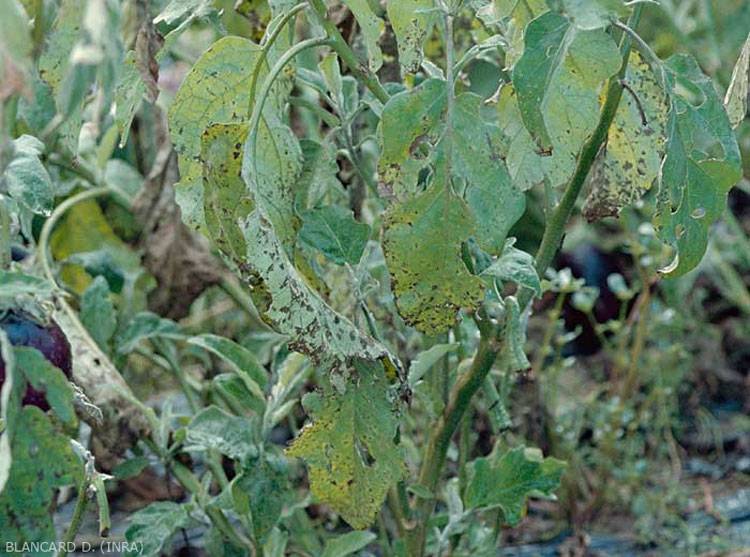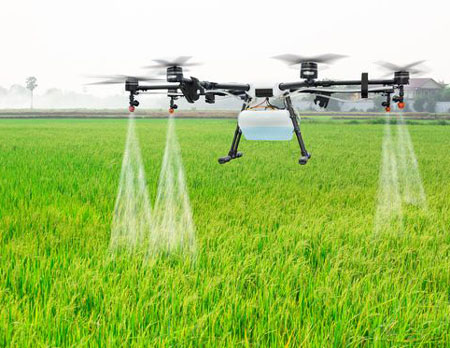Brinjal
Early Blight

Alternaria solani
Fungal Disease

Alternaria solani
Fungal Disease

Alternaria solani
Fungal Disease

Alternaria solani
Fungal Disease
Introduction
Early Blight, caused by the fungus Alternaria solani, is a major disease affecting eggplant (Solanum melongena). It can occur at any stage of plant growth, leading to seedling dieback, foliage damage, and fruit loss. The disease thrives in warm, humid conditions and spreads rapidly under favorable environmental factors. Understanding its symptoms, favorable conditions, and management practices is crucial for effective control.
Symptoms of Early Blight
- Seedling Stage: Causes collar rot, leading to seedling dieback.
- Leaf Symptoms:
- Begins in the lower leaves and spreads upwards.
- Develops dark brown spots with concentric rings, giving a "target" appearance.
- Fruit Infection:
- The fungus attacks the fruit pedicels, leading to premature fruit drop.
- Injured or stressed fruits are more susceptible.
- Disease Progression:
- Symptoms appear 8–10 days after infection.
- Epidemics can occur rapidly under favorable conditions.
Favorable Conditions for Disease Development
Temperature
- Alternaria solani can grow between 2–4°C (minimum) and 28–30°C (maximum).
- The optimum temperature for growth is 15–28°C.
- Spores germinate within two hours under suitable conditions.
- Sporulation is most active at 26.6°C (79.9°F).
Humidity
- High humidity (>90%) favors infection.
- Requires free water (wet leaves or dew) for spore germination.
- Alternating wet and dry periods with temperatures between 5–30°C (41–86°F) enhance spore production.
Other Contributing Factors
- More severe on poorly nourished or stressed plants.
- Survives in crop debris and infected seeds, making crop rotation crucial.
- Spreads through wind, rain splash, and infected seeds.
- Affects other Solanaceae crops, including tomato and potato.
Disease Management Strategies
Cultural Practices
- Crop Rotation – Avoid planting Solanaceae crops in the same field for at least 2–3 years.
- Weed Control – Weeds can harbor the pathogen and increase infection risk.
- Adequate Fertilization & Irrigation – Proper nutrient management reduces susceptibility.
- Use of Furrow Irrigation – Prevents prolonged leaf wetness compared to overhead irrigation.
- Clean Seeds & Sanitation – Use disease-free seeds and remove plant debris.
Chemical and Biological Control
- Fungicide Applications – Regular spraying with chlorothalonil, mancozeb, or copper-based fungicides can help prevent severe infections.
- Biological Control – Beneficial fungi like Trichoderma spp. and bacterial antagonists like Bacillus subtilis can suppress Alternaria solani.
Conclusion
Early Blight is a destructive disease in eggplant, affecting leaves, stems, and fruits, leading to yield losses if left unmanaged. By following preventive measures, maintaining proper nutrition, and implementing integrated disease management (IDM) strategies, farmers can effectively control this disease and ensure healthy crop production.




